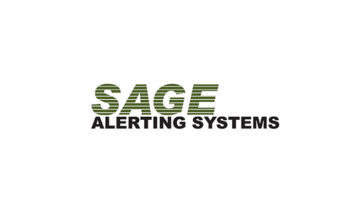
Paul Brown
Fire is a major concern for any radio station, particularly when most of the important electronic equipment has been consolidated into a technical operations center.
However, conventional forms of fire suppression aren’t much better than fire itself when it comes to damage. Electronics simply do not fare well from being drenched in water.
London’s Absolute Radio has long been concerned about fire — and fire suppression damage — to what it calls the Central Technical Area, or CTA. That’s why Paul Brown, the station’s head of technology, recently installed an HFC-227ea-based gaseous fire suppression system.
“Due to the amount of electrical equipment in our CTA, a standard water system was not an option,” he said.
The organization already had an Xtralis VESDA system — an aspirating smoke detector that regularly samples the air to provide an early warning for the presence of smoke — installed. “However it relies upon manual intervention to extinguish any fire.”
The new HFC-227ea-based gaseous fire suppression system is triggered by the VESDA, completing the chain of automatic fire detection and response.
HFC-227ea, the ISO name for 1,1,1,2,3,3,3-Heptafluoropropane gas, works well in CTAs because of how it and other gaseous fire suppression systems extinguish fires.
Rather than smother flames with water or wet foam, a gaseous fire suppression system releases a large cloud of an inert gas, in this case dry HFC-227ea, into the room.
“The extinguishing gas works primarily by physically absorbing heat so that the temperature of the flame falls to a point below which it cannot spread,” Brown said. Other systems work by forcing oxygen out of a space, denying the fire fuel.
This gas is also non-harmful to equipment and surfaces, meaning that once the fire has been doused, the room can be cleared and brought back into normal operation quickly.
Another consideration: “HFC-227ea gas has zero ozone-depletion potential and a short atmospheric lifetime and is therefore considered as an environmentally acceptable extinguishing agent,” he said.
In the event of discharge of the system, an alarm sounds warning anyone in the CTA to evacuate. Once a fire is suppressed, the CTA needs to be ventilated thoroughly before staff can reenter the room.
“The install took approximately two weeks to complete including the final room compression test,” said Brown. “With it in place, we now have properly protected the most important room in this building.”
Help your radio colleagues and earn money at the same time. Share your radio engineering tech tips. Write to[email protected]with Tech Tips in the subject line.







